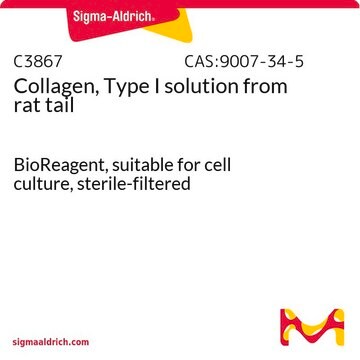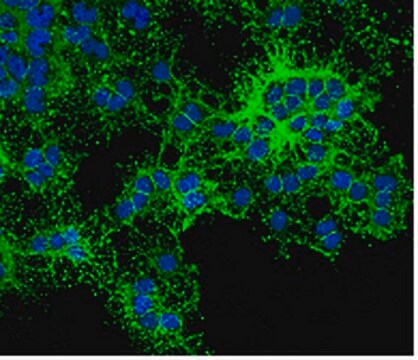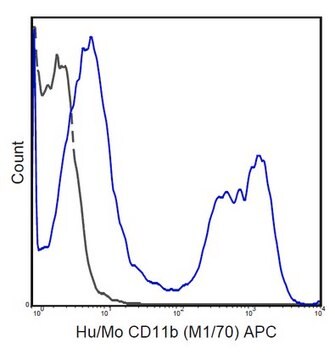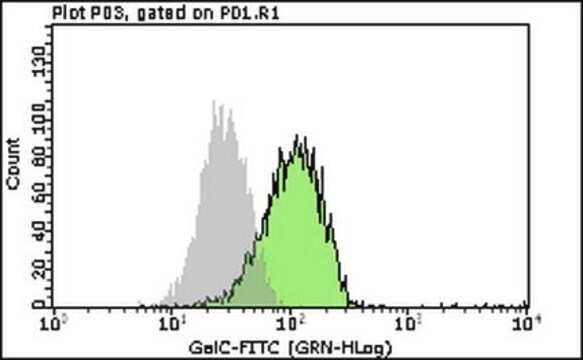07-1512
Anti-phospho-WAVE2 (Ser343) Antibody
from rabbit, purified by affinity chromatography
Sinonimo/i:
SCAR2, WASF2, dJ393P12.2, WASP family protein member 2, Protein WAVE-2, Verprolin homology domain-containing protein 2
About This Item
Prodotti consigliati
Origine biologica
rabbit
Livello qualitativo
Forma dell’anticorpo
affinity isolated antibody
Tipo di anticorpo
primary antibodies
Clone
polyclonal
Purificato mediante
affinity chromatography
Reattività contro le specie
human, monkey
tecniche
western blot: suitable
N° accesso NCBI
N° accesso UniProt
Condizioni di spedizione
wet ice
modifica post-traduzionali bersaglio
phosphorylation (pSer343)
Informazioni sul gene
human ... WASF2(10163)
Descrizione generale
Specificità
Immunogeno
Applicazioni
Cell Structure
Cytoskeletal Signaling
Qualità
Western Blot Analysis: A 1:500 dilution of this antibody detected phospho-WAVE2 (Ser343) in 10 µg of COS-7+EGF cell lysates untreated and lambda phosphatase treated.
Descrizione del bersaglio
An uncharacterized band appears at ~103 kDa in some lysates.
Stato fisico
Stoccaggio e stabilità
Risultati analitici
COS-7+EGF cell lysates untreated and lambda phosphatase treated.
Esclusione di responsabilità
Non trovi il prodotto giusto?
Prova il nostro Motore di ricerca dei prodotti.
Codice della classe di stoccaggio
12 - Non Combustible Liquids
Classe di pericolosità dell'acqua (WGK)
WGK 1
Punto d’infiammabilità (°F)
Not applicable
Punto d’infiammabilità (°C)
Not applicable
Certificati d'analisi (COA)
Cerca il Certificati d'analisi (COA) digitando il numero di lotto/batch corrispondente. I numeri di lotto o di batch sono stampati sull'etichetta dei prodotti dopo la parola ‘Lotto’ o ‘Batch’.
Possiedi già questo prodotto?
I documenti relativi ai prodotti acquistati recentemente sono disponibili nell’Archivio dei documenti.
Il team dei nostri ricercatori vanta grande esperienza in tutte le aree della ricerca quali Life Science, scienza dei materiali, sintesi chimica, cromatografia, discipline analitiche, ecc..
Contatta l'Assistenza Tecnica.







